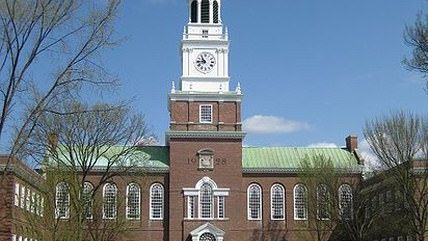Racial Preferences in Universities Won't Work in a Diverse America
They will also splinter the Democrats' minority base

Democrats in California are in a state of shock at the defeat of their effort to reinstate racial preferences in university admissions. That's because the defeat was led not by evil Republicans but a loyal Democratic constituency: Asian Americans.
But what this episode demonstrates is that the zero-sum politics of divvying up a fixed pie—rather than expanding it—is a losing game for Democrats, precisely because America is becoming more diverse.
California became the first state to ban race (and gender) preferences in government admissions and hiring when it passed Prop 209, something that has always bothered liberals. So now that they have a supermajority in the state legislature, they decided to do something about it.
The state Senate approved 27-9 a measure to ask voters in November to overturn the ban. Little did it expect the backlash that ensued.
California's politically sleepy Asian American community, in defiance of its own civil rights leaders, mounted a massive grassroots campaign to kill the measure. It made phone calls, wrote letters, blanketed the airwaves. Ultimately, not only did the Assembly abandon the proposal, but three Asian senators who originally supported the measure reversed themselves.
Liberals are trying to smear these people as the Asian equivalent of (allegedly) loudmouthed Tea Party activists who don't represent the true views of their community.
That is complete nonsense.
The liberal idea of racial justice is proportional representation under which each group is represented in proportion to its population at universities and other institutions. The whole point of scrapping Prop 209 is to hand university officials the power to ignore student test scores and grades to create a more balanced student body based on racial criteria.
Setting aside the moral objections to putting groups rather individuals at the heart of a scheme of social justice, such racial balancing is profoundly at odds with Asian American interests. They represent the single largest ethnic group among the University of California's 173,000 undergraduates. They form about 12 percent of the Golden State's population, but in 2008, they constituted 40 percent of the student body at UCLA and 43 percent at UC Berkeley—California's most selective public universities—as well as 50 percent at UC San Diego and 54 percent at UC Irvine. They have an admission rate of 73 percent compared to 63 percent of all in-state applicants.
Also, they tend to value education as the road to success more than other groups. Yet, with each passing year, getting into top universities gets harder and harder. For example, between 1982 and 2004, the number of applicants to selective private four-year colleges increased 36 percent but enrollment increased 0.7 percent. Things are a bit, but not a whole lot, better in public universities.
Under such increasingly competitive circumstances, it'll be a losing battle to ask Asians to conform to the mentality of white liberal guilt. They won't apologize for their success or abandon their dreams — especially since they themselves have been repeatedly subjected to white discrimination. Remember the Asiatic Exclusion League and the Anti-Coolie Act?
Trying to perform a racial balancing act in a country that was neatly divided into two main groups—the white discriminators and the black discriminated—was one thing. But pulling it off in a diverse country with diverse groups with diverse histories and diverse interests is quite another. Foisting preferences on a diverse America will pit various groups against each other—as well as against Democrats, as the fight in California amply demonstrates. Diversity and racial preferences are directly antithetical, contrary to liberal orthodoxy.
The right approach to maximizing inclusion, a worthy goal, would be to increase capacity at elite and other schools—both public and private—to keep up with population increases and rising demand. Trying to push out one group to make room for another is neither right nor workable. Better to expand the room.
This column originally appeared in the Washington Examiner



Show Comments (29)